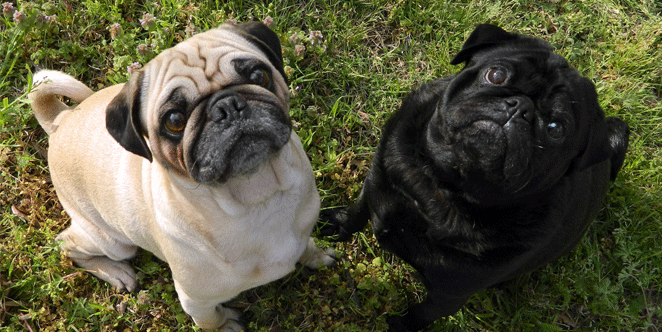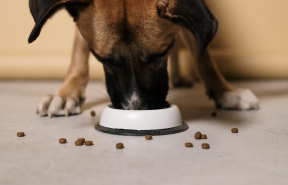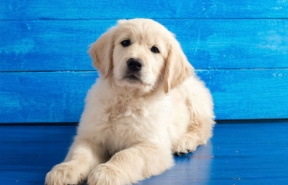As people can't speak "pug" or "polar bear" we need to have a common language to teach our animals so we can communicate. Communication is the key to co-operation and progress. Exotic animal trainers generally use conditioned reinforcers (a bridge), targets, and rewards to communicate with their animals.
As children we learnt to read by starting with the ABC then putting these letters into words, then sentences until we had the ability to read and comprehend a wide variety of subjects. The small steps we initially made when we started learning encouraged us to keep trying to learn more. Good teachers made sure we progressed at a pace that enabled us to enjoy our learning experience.
Animals are the same as people in this regard and by 'explaining' what we want in small, easy to understand steps the animal gains confidence and continues to co-operate and learn.
Frustration, or confusion, in all species of animals can create a 'flight or fight' response. As neither of these responses are desirable it is important that we communicate clearly to the animal what we require.
With large and potentially dangerous animals such as polar bears, positive reinforcement training is done under protected contact. This means that there is a barrier between the trainer and the animal. All other aspects of the training process are the same as you would use with your pet pug.
The term 'click and treat' is used extensively in modern dog training. This method is the same used in conditioning exotic animals. The clicker is a conditioned reinforcer. Exotic animal trainers work with their right and left hands and sometimes both at the same time to give the animal direction. For this reason a silent dog whistle is often used instead of a clicker leaving both hands free to work with the animal.
The clicker, or whistle, indicates to the animal when it has responded correctly and that a reward will follow. The clicker is referred to as a 'bridge' as it bridges the period between the correct response and the reward. For behaviour to increase in duration and frequency the behaviour has to be reinforced within half a second of it occurring. As we cannot always get the reward to the animal within this time period the 'bridge' is used to pinpoint the exact part of the animal's behaviour to be the rewarded.
We can move the animal into different postures or positions by using targets. The animal learns to follow a target to get a reward. This is very important when working with a large animal, as it is impossible to physically manipulate them into place. Most animals take great offence at being manhandled and make sure that the trainer is aware of their dislike with such actions. It is not a good policy to offend the largest carnivore on earth in this way.
Although polar bears are considered to be exclusively carnivores in their natural habitat, this is mainly due to the food that is available in their environment. Polar bears are not far evolved from their close cousins, the brown bear. Brown bears are omnivorous, this means they eat a similar diet to humans. Meat, fish, fruit, vegetables and cereals can all be part of an omnivore diet. Polar bears in human care appreciate a wide variety of foods similar to brown bears.
The bears are given a variety of reinforcers, many of them would be considered rewarding to people as well. The greater variety of rewards you can utilise makes the training more interesting for the animals. Similar to humans the rewards that contain sugar, such as Muesli bars and the occasional muffin are given in moderation.
Other rewards might include dried fruit, fresh fruit, roast turkey or chicken, ADVANCE™ cat and dog food, milk or cheese. Some of these rewards such as the ADVANCE™ kibble and fresh fruit are part of their normal daily diet while dried fruit and Muesli bars are only utilised for training or enrichment.
Polar bears are highly intelligent mammals and readily participate in training sessions. The majority of behaviours are conditioned to assist in keeping the bears healthy. Conditioning behaviours that allow the trainer to inspect the animal's body parts and administer non-invasive treatments reduces the likelihood of any stress that may be related to these procedures.
At Sea World, our polar bears co-operated in maintaining their own wellbeing through our conditioning programme. The bears sit, drop, present their ears, teeth and the top and bottom of their paws for inspection; they will also present a shoulder or forearm for injection.
One of our bears has had root canal surgery on a broken tooth and he now regularly has his teeth brushed using a canine or electric toothbrush - this could not be accomplished without the voluntary co-operation of the bears. These same behaviours and more are regularly conditioned with many exotic species in zoos throughout the world.
The technique of positive reinforcement is a very powerful training tool and can also be used in the same way to train animals from polar bears to pugs.
Puppy, Adult Dog
Training: Pugs or Polar Bears

As people can't speak "pug" or "polar bear" we need to have a common language to teach our animals so we can communicate. Communication is the key to co-operation and progress.












